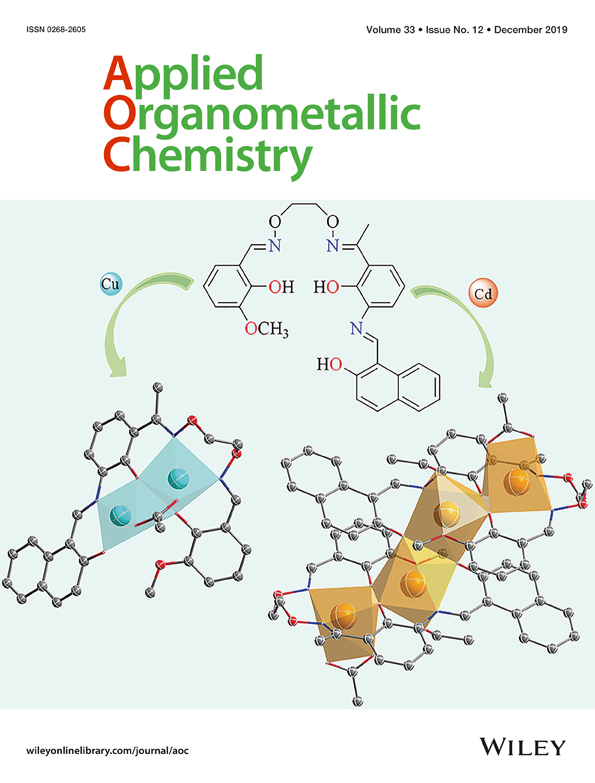A novel biosensor for early diagnosis of liver cancer cases using smart nano-magnetic metal–organic framework
Abstract
For the first time, alpha-fetoprotein (AFP) quantification as an early test for liver cancer diagnosis competing with other interfering analytes and factors based on a novel nano-magnetic metal–organic framework (MOF) was investigated. The novel nano-magnetic MOF was synthesized via a simple preparation method, and characterized using various techniques. The X-ray photoelectron spectrum of the nano-magnetic MOF shows Cu 2p, O 1s, N 1s and C 1s peaks that evidence the presence of these elements in the sample without any impurities. Scanning and transmission electron microscopy images show the nano-magnetic MOF with average size between 22 and 43 nm. The results of a photoluminescence study show that the nano-magnetic MOF exhibits strong emission at 418 nm after excitation at 354 nm. Moreover, a Stern–Völmer graph shows a linear calibration curve over an AFP concentration range 1.0–520 ng ml−1 with a correlation coefficient of 0.997, detection limit of 1.18 ng ml−1 and quantitation limit of 3.58 ng ml−1. According to the marked quenching of the photoluminescence intensity of the nano-magnetic MOF using various concentrations of AFP, it was successfully used as a biosensor for AFP in serum samples collected from hepatitis patients in addition to healthy males and females. The quenching mechanism was well studied, and found to be a dynamic type. The present work offers a simple, low-cost, room-temperature and rapid technique, being non-time-consuming, highly accurate, selective and highly sensitive compared with most published methods.
CONFLICT OF INTEREST
The authors declare that they have no competing interests.
The human serum samples used in this study were provided by the Family Medical Laboratory, Ministry of Health, Cairo, Egypt. Informed consent was obtained. The studies were approved by the appropriate ethics committee (Ministry of Health, Egypt) and were performed in accordance with ethical standards. We did not use the samples in any research involving human participants or research involving physical interventions on study participants or involving processing of personal data but conducted the research according to the method described in the article.




